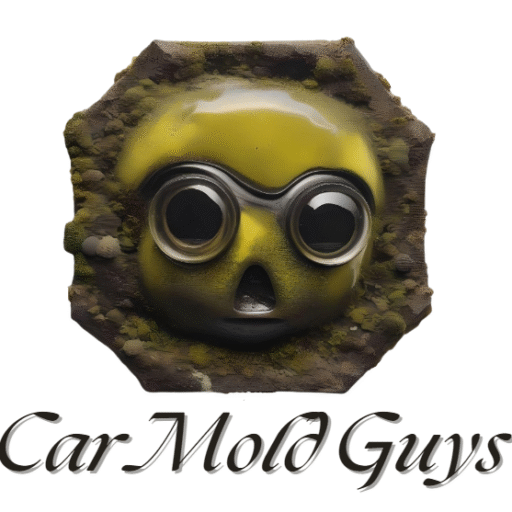A Comprehensive Guide to Car Mold Remediation: Best Practices
Discovering mold in your car can be a distressing experience. That musty odor and unsightly patches are not only unpleasant but can also pose significant health risks and damage your vehicle’s interior. This guide provides an in-depth look at car mold remediation best practices, drawing on expert advice to help you safely and effectively tackle the problem.
The Dangers of Mold in Your Car
Before diving into the cleaning process, it’s crucial to understand the potential hazards of mold. The presence of mold in your car can lead to:
-
Health Risks: Mold spores are allergens that can trigger a range of health issues, including allergic reactions (sneezing, runny nose, red eyes, skin rash), asthma attacks, and other respiratory problems. For individuals with compromised immune systems, the risks can be even more severe.
-
Damage to Your Vehicle: Mold feeds on organic materials, which means it can slowly destroy your car’s upholstery, carpets, and even leather seats. If left untreated, mold can lead to permanent staining and deterioration of your car’s interior, significantly reducing its value.
Safety First: Essential Precautions for DIY Car Mold Cleaning
When dealing with mold, safety should be your top priority. Before you begin any DIY car mold cleaning, make sure you have the following personal protective equipment (PPE):
-
A respirator or N95 mask: To prevent inhaling mold spores.
-
Goggles: To protect your eyes from spores and cleaning solutions.
-
Gloves: To protect your hands from both mold and harsh cleaning agents.
-
Long-sleeved clothing: To minimize skin contact with mold.
It’s also essential to work in a well-ventilated area. Park your car outdoors, with all the doors and windows open, to allow for proper air circulation.
DIY Car Mold Remediation: A Step-by-Step Guide
For minor mold infestations, a DIY approach can be effective. Here’s a step-by-step guide to help you get started:
Step 1: Find and Address the Source of Moisture
Mold thrives in damp environments, so the first step is to identify and fix any leaks that may be causing the problem. Check for:
-
Leaky seals around windows and doors.
-
A clogged or leaking sunroof drain.
-
A malfunctioning air conditioning system.
-
Spills that were not properly cleaned up.
Step 2: Thoroughly Dry the Interior
Before you start cleaning, your car’s interior must be completely dry. You can use fans, a dehumidifier, or simply park your car in a sunny spot with the windows open to air it out.
Step 3: Vacuum the Affected Areas
Use a vacuum with a HEPA filter to carefully remove any loose mold spores from carpets, seats, and other surfaces. Be sure to dispose of the vacuum bag or clean the canister immediately after use to prevent spreading the spores.
Step 4: Choose Your Cleaning Solution
There are several effective cleaning solutions for removing mold from your car’s interior:
-
White Vinegar: A popular and effective option. Mix equal parts white vinegar and water in a spray bottle. Vinegar’s mild acidity helps to kill mold spores.
-
Baking Soda: Another natural and safe option. Create a paste with baking soda and water, or sprinkle it directly on the affected areas to absorb moisture and odors.
-
Specialized Mold Cleaners: There are many commercial mold and mildew removers available that are specifically designed for automotive use. Always follow the manufacturer’s instructions when using these products.
Step 5: Clean and Disinfect
-
For fabric and carpet: Spray your chosen cleaning solution on the moldy areas and let it sit for at least 20 minutes. Use a soft-bristled brush to gently scrub the area, then wipe it clean with a damp cloth.
-
For leather and vinyl: Be cautious with these materials. Test your cleaning solution on a small, inconspicuous area first. A gentle soap and water solution or a specialized leather cleaner is often the safest choice.
-
For hard surfaces: Use your chosen cleaning solution to wipe down the dashboard, door panels, and any other hard surfaces.
Step 6: Don’t Forget the HVAC System
Mold can also grow in your car’s heating, ventilation, and air conditioning (HVAC) system. To address this, you can spray a disinfectant into the exterior air intake vents while the fan is running. It’s also a good idea to replace your cabin air filter.
When to Call for Professional Car Mold Removal
While a DIY approach can work for small mold problems, there are times when it’s best to call in the professionals. Consider professional car mold removal if:
-
The mold covers a large area of your car’s interior.
-
The mold has penetrated deep into the upholstery or carpets.
-
You or your passengers are experiencing health problems that could be related to mold exposure.
-
The mold keeps coming back despite your cleaning efforts.
Professional detailers have the specialized equipment and expertise to safely and thoroughly remove mold from your vehicle, including using treatments like CL02 to kill spores and eliminate odors.
Preventing Future Mold Growth
Once your car is mold-free, take these steps to prevent it from returning:
-
Keep your car clean and dry: Regularly clean up spills and crumbs, and use all-weather floor mats to protect your carpets.
-
Ensure proper ventilation: Occasionally run your car’s air conditioner to help reduce humidity.
-
Fix leaks promptly: If you notice any leaks, have them repaired as soon as possible.
-
Use a dehumidifier: If you live in a particularly humid climate, consider using a car dehumidifier to absorb excess moisture.
By following these best practices for car mold remediation, you can protect your health, preserve your vehicle, and ensure a clean and pleasant driving experience.
Advanced Sanitizing
We use hospital-grade disinfectants to eliminate 99.9% of bacteria and viruses, ensuring a safe and healthy environment inside your vehicle. We will use safe Chlorine Dioxide to remove car odors.

